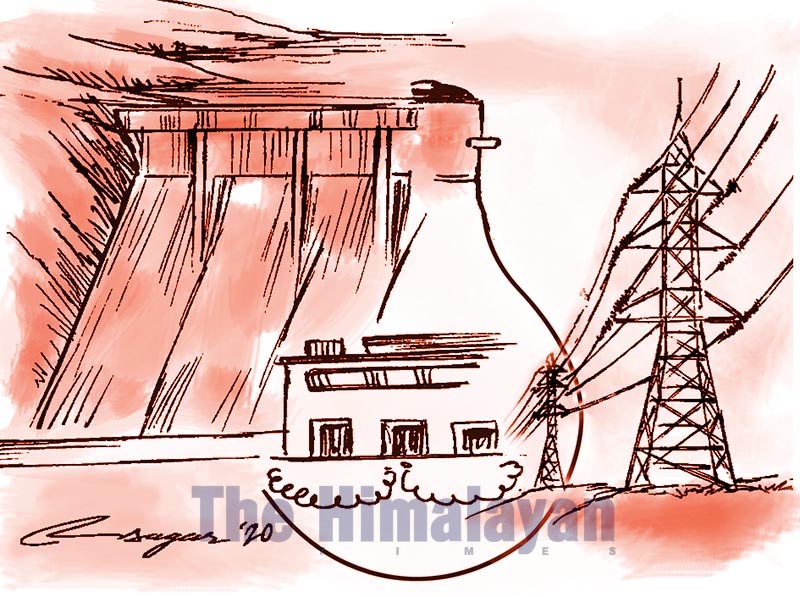West Seti Hydropower Project: Time to revive it
The government has stopped embarking upon development works in those areas which lie on the project site. As a result, the locals have been deprived of even basic services like electricity, roads, drinking water, irrigation and education
The much-hyped West Seti Hydropower Project, proposed to be built on the West Seti River in western Nepal, has been on the backburner for the last 28 years. The project is a reservoir-type hydel project with a capacity for generating 750 megawatts of electricity. In the beginning, an Australian company, Snowy Mountains Engineering Corporation (SMEC), showed interest in the project and began working on it in 1996 with the objective of beginning the project in 2004 and generating power in 2008, most of which would be exported to India.
However, SMEC could not manage funds for the project, and so no tangible progress could be made on the project. Furthermore, failure to hold satisfactory negotiations with India on the sale of power, the decade-long Maoist insurgency and the corrupt bureaucracy, inter alia, also conspired to scuttle the project. At last, SMEC had to withdraw from the project.
In 2012, the government signed a memorandum of understanding (MoU) with Three Gorges Corporation, China’s biggest hydropower developer and operator of the world’s largest hydel plant at the Three Gorges dam on the Yangtze River. However, work on the project could not go ahead as expected. Three Gorges Corporation later decided to back out of the project, saying that the project was not feasible as it would involve huge resettlement and rehabilitation costs despite the government’s assurances that the project’s capacity would be reduced by 20 per cent to 600 MW, the power purchase agreement would be made in US dollars and the power purchase agreement would be extended to 12 years from 10 years. It was, however, speculated that India showed unwillingness to purchase the power to be generated by the project although it initially showed interest in purchasing up to 90 per cent of the power.
After the Chinese corporation withdrew from the project, India showed interest in investing in Nepal’s hydropower sector. For example, India’s Satluj Jal Vidyut Nigam (SJVN) is now constructing the 900 MW Arun III Hydropower Project.
Meanwhile, the government decided to execute the project on its own by mobilising internal resources. The cost is now estimated at Rs. 160 billion. But there is no sign that the project will get off the ground any time soon.
The project is an example of how badly planning of big projects is executed in Nepal. A project lingering for about three decades is not something that can be taken lightly. Most of the hydel projects in Nepal are run-of-the-river projects. Such projects depend on the flow of rivers for the generation of power and produce less power in the winter than in the summer. On the other hand, reservoir-type hydel projects can generate power at a constant rate all the year round. Besides the West Seti Hydropower Project, other such projects include the Budhi Gandaki (1,200 MW), Tamor (762 MW) and Nalsing Gad (410 MW). As reservoir-type hydel projects are more expensive than their run-of-the-river counterparts and solar plants to construct, the private sector is not interested in investing in the former.
The impact of the failure of the project has fallen heavily on the locals. The project area includes some parts of Dadeldhura, Baitadi, Doti and Bajhang. As these parts lie on the project site, the government has stopped embarking upon development works there. As a result, the locals have been deprived of even basic services like electricity, roads, drinking water, irrigation and education. The locals complain that when loadshedding has been eliminated in other parts of the country, they are still forced to live in darkness.
However, the project is used as a gimmick by the political parties during elections. They do not hesitate to make the project an agenda in their election manifestos.The locals are, therefore, sick and tired of the government’s attitude towards them as well as its indifference to the construction of the project. On the one hand, the government is still in a dilemma of whether to construct the project on its own or hire an international hydropower developer through competitive bidding. Prudence dictates that the government should make up its mind to revive the project either on its own or by hiring an international developer.
It may be noted that the project was mooted at a time when the country was facing an acute power outage due to dishonesty on the part of the top officials of Nepal Electricity Authority. Loadshedding has now completely come to a halt thanks to the honest and efficient leadership of NEA Managing Director Kulman Ghising. Producing power in excess of the country’s demand is not bad; excess power can be exported to neighbouring countries like India and Bangladesh.
It is the duty of the government to meet the basic requirements of its people. But the people of the areas affected by the project have been held hostage, so to speak, by the government for years in the name of the project. If the project is not feasible as claimed by Three Gorges Corporation, it is better for the project to be scrapped altogether. And, with the scrapping of the project, infrastructure development should be immediately embarked upon in the affected areas so that the long-suffering locals may have a feeling of relief and get social justice. If the project is really feasible, then the government should begin work on the project forthwith.






